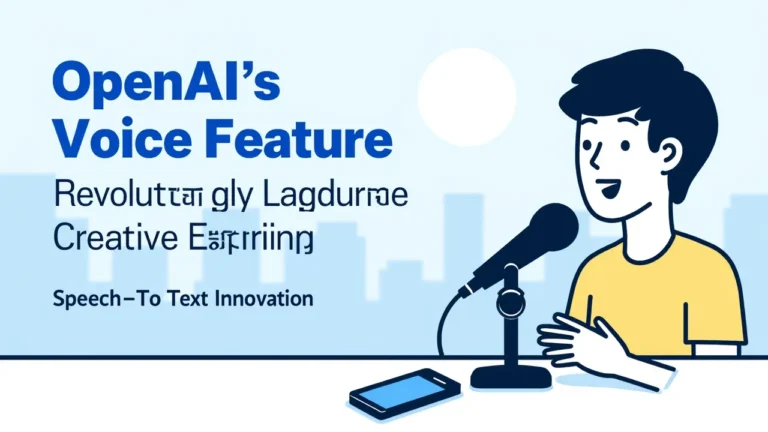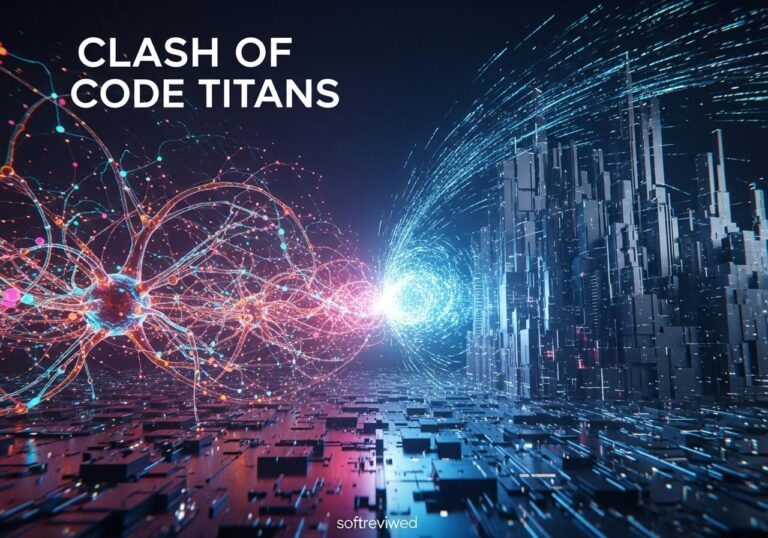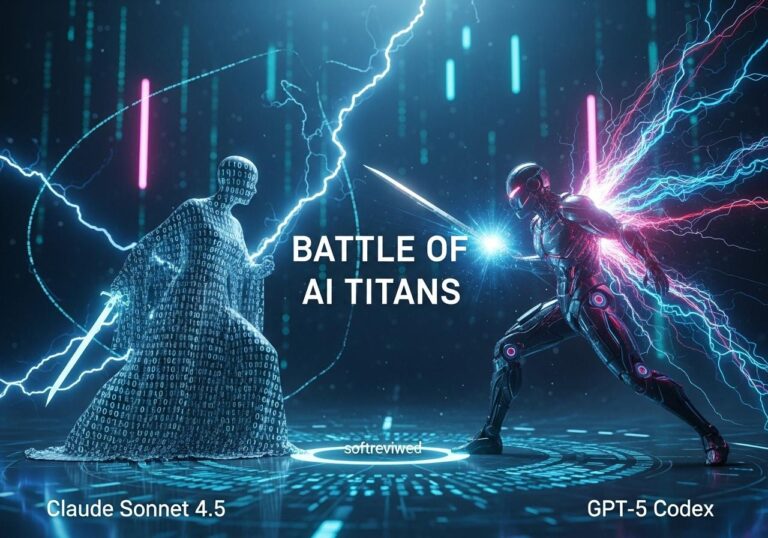🎙️ OpenAI’s Revolutionary Voice AI Features
Discover the exciting new capabilities of OpenAI’s voice technology that are transforming language learning and interaction.
🗣️ Language Learning and Pronunciation
OpenAI’s new voice feature can teach languages and correct pronunciation, helping users improve their speaking skills.
👁️ Real-World Object Analysis
The AI can analyze real-world objects and scenes using GPT Vision, allowing users to point their camera at anything and ask questions in real-time.
🎭 Voice Mimicry and Character Impersonation
The voice feature can mimic various tones, accents, and characters, including famous individuals like Bugs Bunny, Yoda, and Homer Simpson.
📚 Immersive Storytelling
The AI can create immersive stories with sound effects and background noises, making it a great tool for generating bedtime stories or action thrillers.
🌍 Multilingual Support
The voice feature supports dozens of languages, including Spanish, French, Japanese, and many more, with the ability to switch between languages and accents seamlessly.
🤖 AI Sentience and Emotional Intelligence
The AI’s natural and realistic voice raises questions about its potential for sentience and emotional intelligence, with some users noting subtle signs of emergent behavior.
OpenAI Unveils Groundbreaking Voice Technology
OpenAI has released a new voice feature for ChatGPT that's turning heads in the tech world. This advanced voice mode, currently available to a select group of ChatGPT Plus users, is making waves with its incredibly natural and versatile capabilities. From language learning to creative storytelling, the possibilities seem endless.
Key Features of OpenAI's New Voice Technology
Realistic Language Learning
One of the most impressive aspects of this new voice feature is its ability to assist in language learning. Users can practice pronunciation and receive instant feedback, making it an invaluable tool for those looking to improve their language skills.
- Pronunciation correction
- Real-time feedback
- Multiple language support
Creative Expression
The voice feature isn't just for language learning. It's also a powerful tool for creative expression, capable of:
- Rapping and beatboxing
- Singing in various styles
- Impersonating different characters and accents
Storytelling and Entertainment
Parents and educators will be excited to learn that the voice feature can:
- Tell bedtime stories
- Create immersive narratives with sound effects
- Adapt stories to different languages and accents
How to Access OpenAI's New Voice Feature

Currently, access to this feature is limited. Here's what you need to know:
- It's only available to ChatGPT Plus users
- Users will see a pop-up in the mobile app saying "Try advanced voice mode"
- If you don't see the pop-up, you'll need to wait for wider distribution
The Technology Behind the Voice
The realism of this voice technology is what sets it apart from other AI voice tools. Users report that it's often difficult to distinguish from a human voice, noting:
- Natural pauses and breathing sounds
- Ability to convey emotion and tone
- Seamless transitions between different accents and characters
Practical Applications
Language Learning
The voice feature's ability to teach languages and correct pronunciation makes it a potential game-changer in the language learning industry. It can:
- Teach proper pronunciation of words like "croissant" and "baguette"
- Provide instant feedback on accent and intonation
- Offer lessons in multiple languages
Creative Writing and Performance
For writers, performers, and content creators, this tool opens up new possibilities:
- Generate unique character voices for storytelling
- Create custom songs or raps on demand
- Experiment with different vocal styles and genres
Educational Tools
Educators can use this technology to:
- Create engaging audio content for lessons
- Provide accessible learning materials for students with different needs
- Offer interactive storytelling experiences
Integration with Other AI Technologies
One of the most exciting aspects of this new voice feature is its integration with other AI technologies:
GPT Vision Integration
Users can combine the voice feature with GPT vision, allowing for real-time analysis and commentary on visual inputs. For example:
- Analyzing pet setups and providing advice
- Translating text from images in real-time
- Describing and interpreting visual scenes
Multimodal Capabilities
The combination of text, audio, and visual inputs creates a more comprehensive AI experience:
- Enhanced understanding of context
- More natural and fluid interactions
- Potential for more complex problem-solving
Comparing OpenAI's Voice Feature to Other AI Voice Tools
| Feature | OpenAI Voice | Traditional AI Voice Tools |
|---|---|---|
| Naturalness | Highly realistic | Often robotic |
| Versatility | Multiple accents and styles | Limited range |
| Integration | Works with vision and text AI | Often standalone |
| Language Learning | Interactive with feedback | Usually one-way playback |
| Creative Capabilities | Can rap, sing, storytell | Limited to basic speech |
Potential Impacts on Various Industries
Education
The implications for education are significant:
- Personalized language tutoring at scale
- Interactive storytelling for literature classes
- Accessible learning materials for students with different needs
Entertainment
The entertainment industry could see new creative tools:
- Voice acting for animations and games
- Custom music creation
- Interactive audiobooks
Accessibility
This technology has the potential to improve accessibility:
- Text-to-speech with more natural intonation
- Language translation with proper accents
- Audio descriptions of visual content
Ethical Considerations and Challenges
As with any advanced AI technology, there are ethical considerations to keep in mind:
Privacy Concerns
- How is voice data collected and stored?
- What are the potential risks of voice cloning?
Authenticity and Misinformation
- How can we verify the authenticity of AI-generated voices?
- What safeguards are needed to prevent misuse?
Impact on Human Jobs
- Will this technology replace voice actors or language tutors?
- How can we ensure responsible integration into various industries?
Future Developments and Possibilities
As this technology continues to evolve, we can expect to see:
- Even more realistic and versatile voice synthesis
- Broader language support and cultural adaptations
- Integration with virtual and augmented reality technologies
User Experiences and Reactions
Early users of the technology have reported:
- Amazement at the naturalness of the voice
- Excitement about the creative possibilities
- Surprise at the range of accents and styles available
Tips for Using OpenAI's Voice Feature
If you're lucky enough to have access to this feature, here are some tips to make the most of it:
- Experiment with different accents and styles
- Use it for language practice and pronunciation
- Try creative writing prompts with different character voices
- Combine it with GPT vision for interactive experiences
- Be mindful of the potential limitations and ethical considerations
The Broader Implications for AI Development
The release of this voice feature is not just about a new tool; it represents a significant step forward in AI development:
- It demonstrates the increasing ability of AI to mimic human-like interactions
- It raises questions about the future of human-AI collaboration
- It opens up new avenues for research in natural language processing and voice synthesis
Conclusion
OpenAI's new voice feature for ChatGPT represents a significant leap forward in AI voice technology. Its natural sound, versatility, and integration with other AI capabilities make it a powerful tool for language learning, creative expression, and much more. As this technology continues to develop and become more widely available, we can expect to see innovative applications across various industries.
However, as with any advanced technology, it's crucial to consider the ethical implications and potential challenges. As we move forward, it will be important to balance the exciting possibilities with responsible development and use.
Whether you're a language learner, a creative professional, or simply curious about the latest in AI technology, OpenAI's new voice feature is certainly something to watch. As it becomes more widely available, it will be fascinating to see how users and industries adapt and innovate with this powerful new tool.







